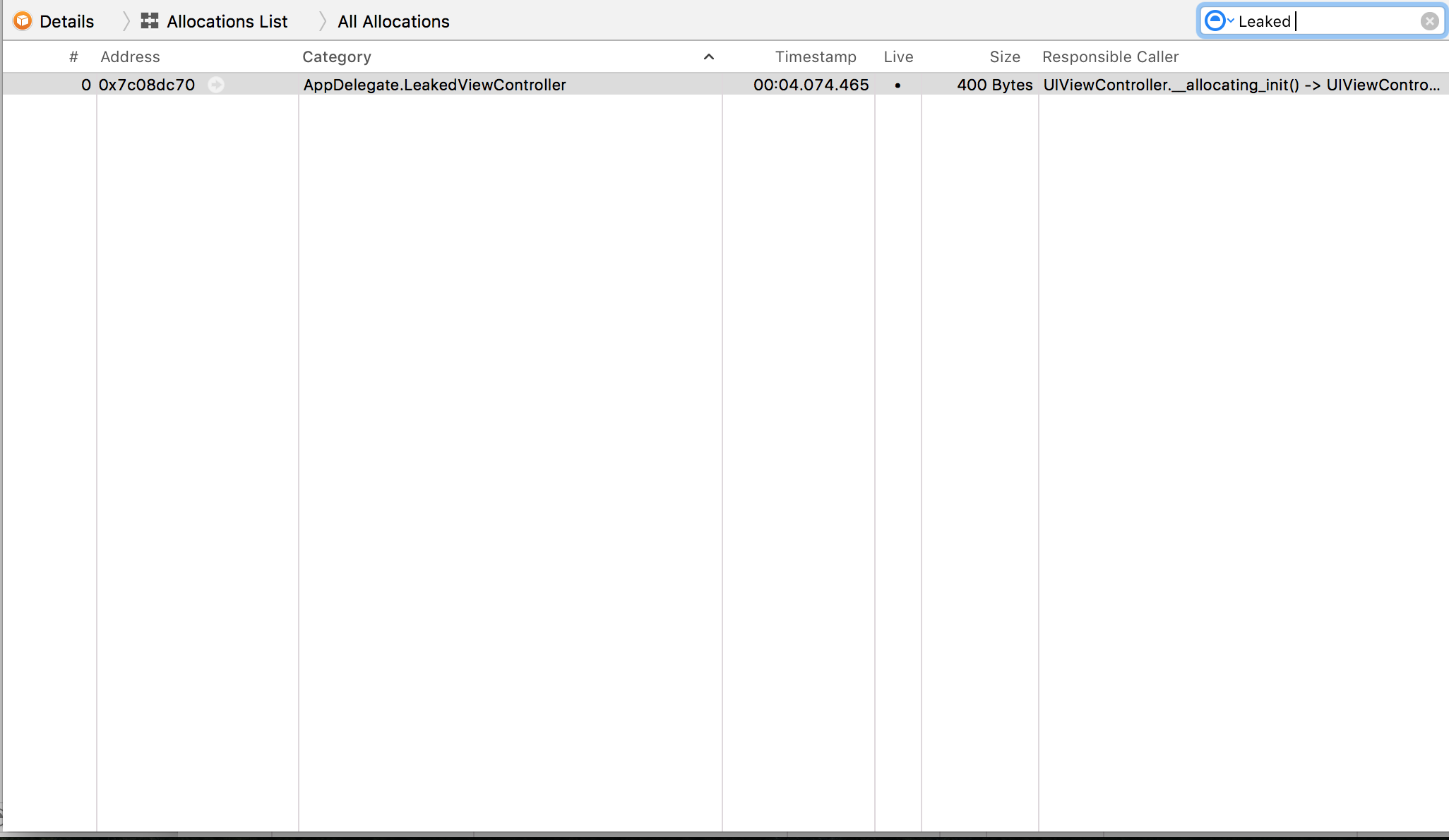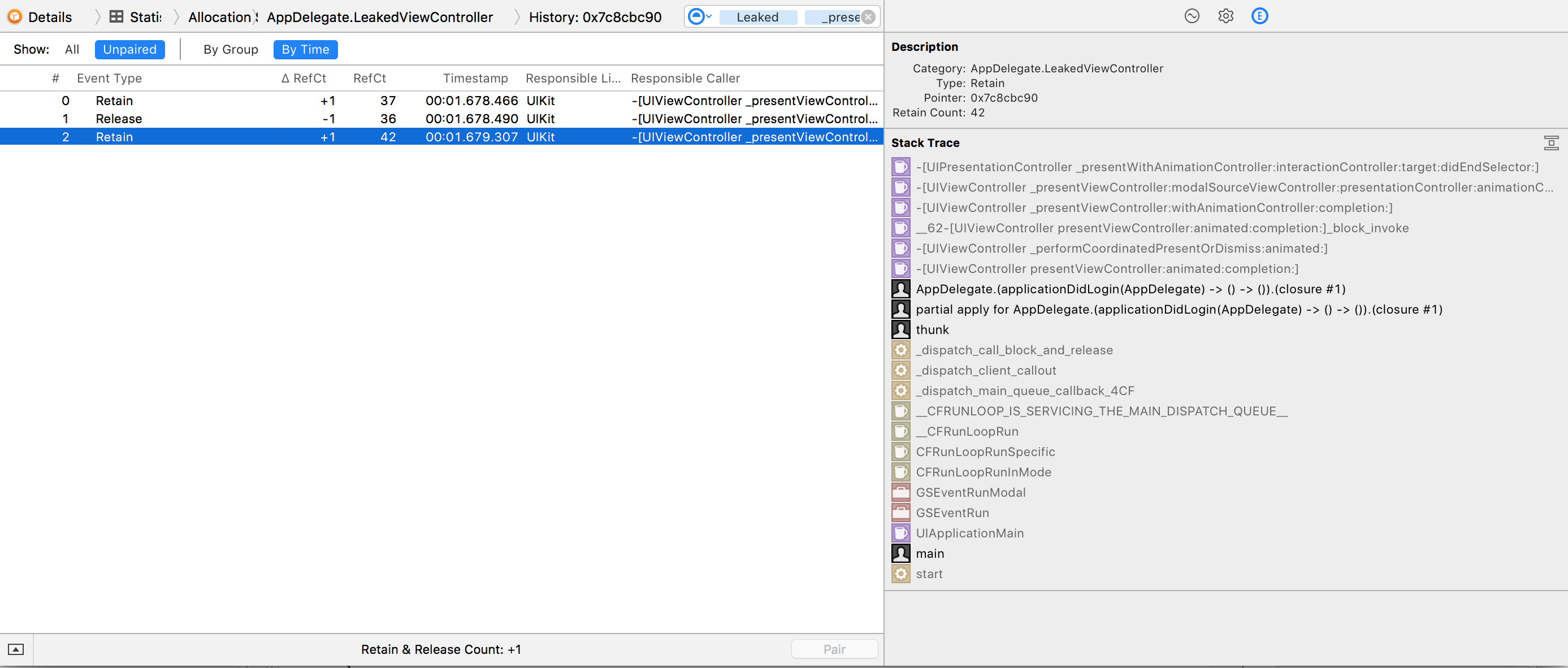Environment
iOS 9.2
Xcode 7.2
I'm looking to replace the UIWindow's rootViewController with an animation while also removing it from the view hierarchy as well.
class FooViewController: UIViewController
{
}
class LeakedViewController: UIViewController
{
}
Then initiate the transition in the AppDelegate simply by
self.window!.rootViewController = LeakedViewController()
let fooViewController = FooViewController()
self.window!.rootViewController?.presentViewController(fooViewController, animated: true){ unowned let window = self.window!
window.rootViewController = fooViewController
}
Profiling this in Instruments, notice that the rootViewController is still in memory.
Also came across this bug report which seems to suggest the same issue is present in iOS 8.3 and still Open.
Haven't been able to find any references to suggest that as part of the
UIViewController.presentViewController(animated:completion:)
the source view controller is retained (most likely by the UIPresentationController?) or if this is a bug. Notice that the UIPresentationController was first introduced in iOS 8.
If that's by design, is there an option to release the source view controller?
Using a subclass of UIPresentationController with
override func shouldPresentInFullscreen() -> Bool {
return true
}
override func shouldRemovePresentersView() -> Bool {
return true
}
doesn't seem make any difference. Haven't been able to locate anything else in the SDK.
Currently the only way I have found is to use a UIViewController, with a snapshot of what's currently on screen, in place of the root view controller before making the transition.
let fooViewController = FooViewController()
let view = self.window!.snapshotViewAfterScreenUpdates(false)
let viewController = UIViewController()
viewController.view.addSubview(view)
self.window!.rootViewController = viewController
self.window!.rootViewController?.presentViewController(dashboardViewController!, animated: true){ unowned let window = self.window!
window.rootViewController = fooViewController
}
It does work, tho in the console the following warning appears
Unbalanced calls to begin/end appearance transitions for <UIViewController: 0x79d991f0>.
Any ideas on the original question or the warning message appreciated.
Update
I believe I have narrowed it down to this one retain that's missing a release.
That is the possible offending call.
0 UIKit -[UIPresentationController _presentWithAnimationController:interactionController:target:didEndSelector:]


